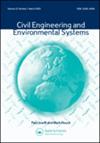Social vulnerability assessment for an industrial city in Natech accidents: A Bayesian network approach
IF 1.1
3区 工程技术
Q3 ENGINEERING, CIVIL
引用次数: 0
Abstract
ABSTRACT China is a large industrial country where tropical meteorological disasters occur frequently. Therefore, natural-technological (Natech) risk cannot be ignored. Assessing the social vulnerability of an industrial city prone to tropical meteorological disaster-induced Natechs is urgent. To analyze the social vulnerability of such cities, we propose a Bayesian network (BN)-based method to model the social vulnerability framework. Natech is characterised by high-consequence and low-probability. The industrial cities in Southeast China are selected as a case study. The Monte Carlo method simulates the data generated in industrial cities suffering from tropical disaster-induced Natechs, and the conditional probability tables of BN descendant nodes are obtained by the expert scoring method. After sensitivity analysis, we conclude that the ‘catastrophic index of tropical cyclones,’ ‘population density,’ and ‘prevention capacity’ have important impacts on social vulnerability. Human traits, the social environment, and the economy play important roles in social vulnerability assessments. Therefore, reducing the catastrophic index of tropical cyclones and population density and strengthening prevention capacity management measures are necessary. Some suggestions obtained after sensitivity analysis can assist governments in improving disaster prevention and mitigation abilities and formulating urban planning policies for sustainable development. Highlights Industry city’s vulnerability analysis for Natural-technological (Natech) accidents A social vulnerability assessment framework for sustainable development A Bayesian network combined with the Monte Carlo simulation data and expert judgment Risk management for high-consequence and low-probability events工业城市科技事故社会脆弱性评价:贝叶斯网络方法
中国是一个工业大国,热带气象灾害频发。因此,自然技术(Natech)风险不容忽视。评估一个易受热带气象灾害影响的工业城市的社会脆弱性迫在眉睫。为了分析这些城市的社会脆弱性,我们提出了基于贝叶斯网络(BN)的社会脆弱性框架建模方法。Natech的特点是高后果和低概率。本文以东南地区的工业城市为研究对象。蒙特卡罗方法对遭受热带灾害的工业城市产生的数据进行模拟,通过专家评分法得到BN后代节点的条件概率表。通过敏感性分析,我们发现热带气旋灾害指数、人口密度和预防能力对社会脆弱性有重要影响。人类特征、社会环境和经济在社会脆弱性评估中发挥着重要作用。因此,降低热带气旋灾变指数和人口密度,加强预防能力管理措施是必要的。通过敏感性分析得出的一些建议可以帮助政府提高防灾减灾能力,制定可持续发展的城市规划政策。基于可持续发展的社会脆弱性评价框架基于蒙特卡罗模拟数据与专家判断相结合的贝叶斯网络高后果低概率事件风险管理
本文章由计算机程序翻译,如有差异,请以英文原文为准。
求助全文
约1分钟内获得全文
求助全文
来源期刊

Civil Engineering and Environmental Systems
工程技术-工程:土木
CiteScore
3.30
自引率
16.70%
发文量
10
审稿时长
>12 weeks
期刊介绍:
Civil Engineering and Environmental Systems is devoted to the advancement of systems thinking and systems techniques throughout systems engineering, environmental engineering decision-making, and engineering management. We do this by publishing the practical applications and developments of "hard" and "soft" systems techniques and thinking.
Submissions that allow for better analysis of civil engineering and environmental systems might look at:
-Civil Engineering optimization
-Risk assessment in engineering
-Civil engineering decision analysis
-System identification in engineering
-Civil engineering numerical simulation
-Uncertainty modelling in engineering
-Qualitative modelling of complex engineering systems
 求助内容:
求助内容: 应助结果提醒方式:
应助结果提醒方式:


